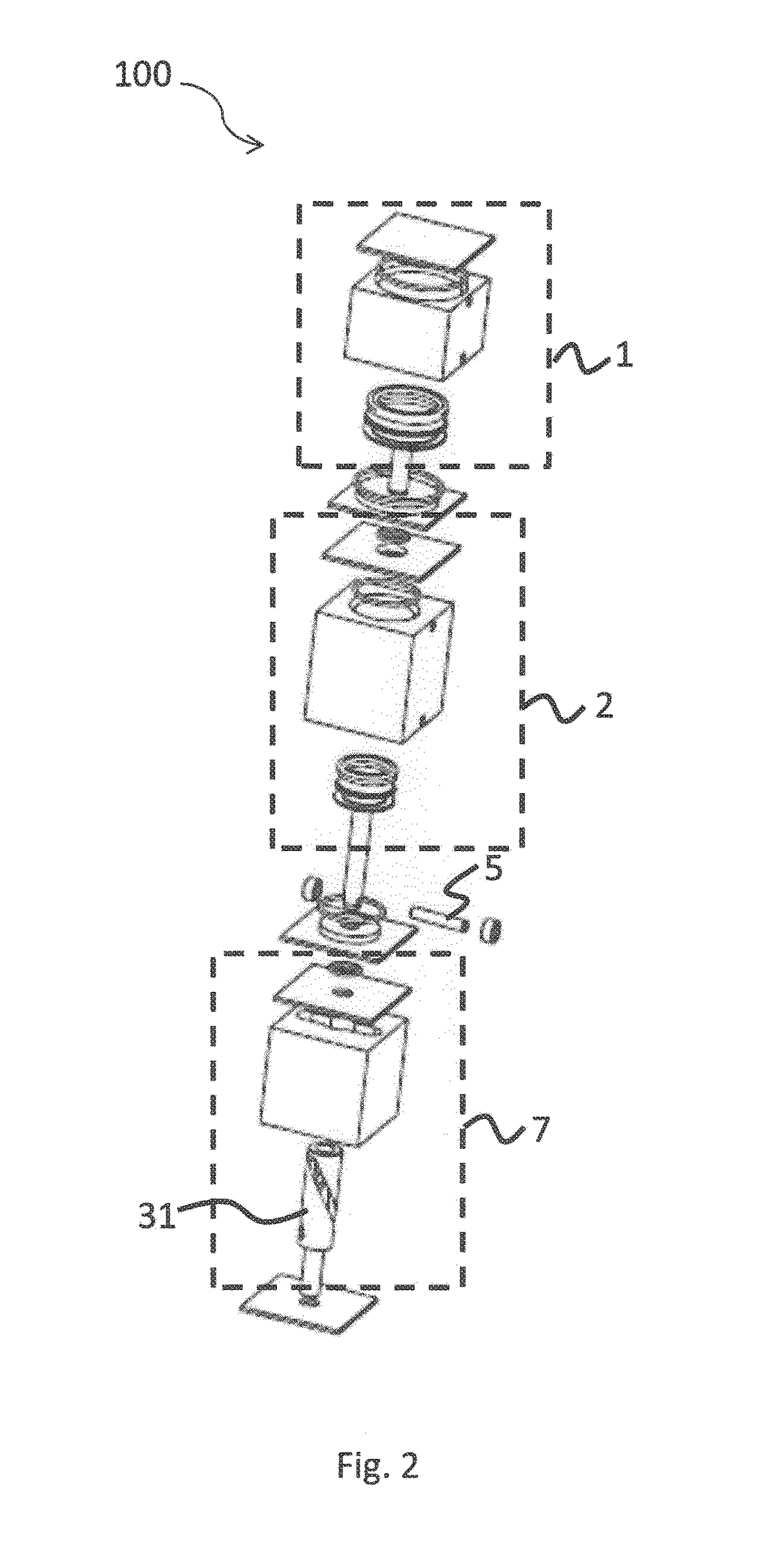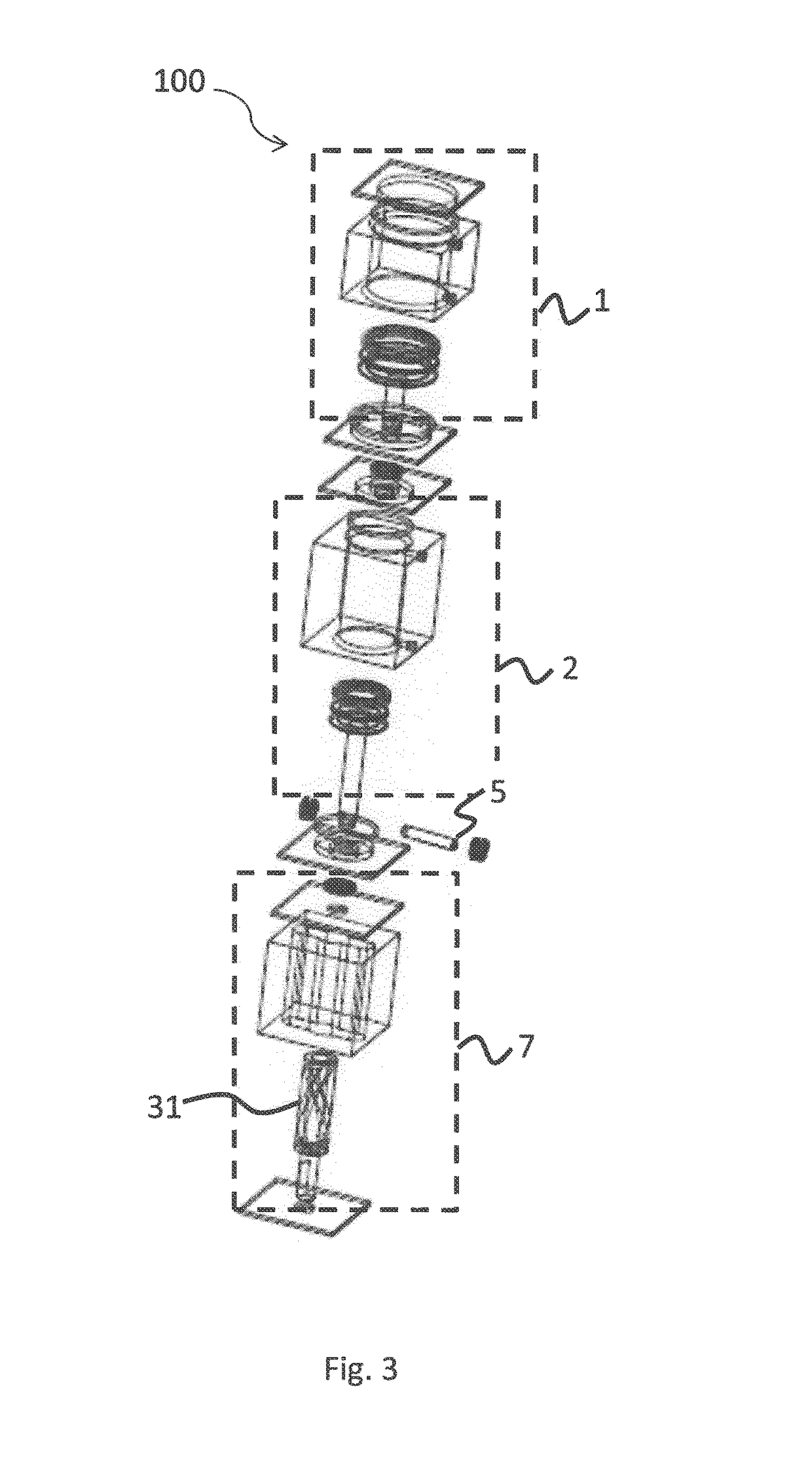Multi-position rotary actuator controlled by a fluid
a rotary actuator and fluid technology, applied in the direction of valve operating means/release devices, gearing, servomotors, etc., can solve the problems of not negligible leakage rate in compressed air, unacceptable, and relatively complicated overall device implementation, so as to improve sealing performance, less leakage of control fluid, and good sealing
- Summary
- Abstract
- Description
- Claims
- Application Information
AI Technical Summary
Benefits of technology
Problems solved by technology
Method used
Image
Examples
Embodiment Construction
[0041]FIGS. 1 to 3 show different views of an example of the device 100 according to the invention. Along a longitudinal direction, symbolised by an arrow in FIG. 1, the device 100 comprise a first 1 and a second 2 hydraulic cylinder. These two hydraulic cylinders (1, 2) are coupled in such a way that a configuration (or operating state) of the first hydraulic cylinder 1 can influence a configuration (or operating state) of the second hydraulic cylinder 2. It can also be said that the first and second hydraulic cylinders (1, 2) are coupled in such a way that the first 1 is able to influence the second 2 and more particularly an operating state of the second hydraulic cylinder 2. For example, the first and second hydraulic cylinders (1, 2) can be mechanically coupled. This shall be seen more clearly during the description of the operation of the device 100 of the invention which will be done with FIG. 5.
[0042]The first 1 (respectively second 2) hydraulic cylinder is a linear hydrauli...
PUM
 Login to View More
Login to View More Abstract
Description
Claims
Application Information
 Login to View More
Login to View More - R&D
- Intellectual Property
- Life Sciences
- Materials
- Tech Scout
- Unparalleled Data Quality
- Higher Quality Content
- 60% Fewer Hallucinations
Browse by: Latest US Patents, China's latest patents, Technical Efficacy Thesaurus, Application Domain, Technology Topic, Popular Technical Reports.
© 2025 PatSnap. All rights reserved.Legal|Privacy policy|Modern Slavery Act Transparency Statement|Sitemap|About US| Contact US: help@patsnap.com



